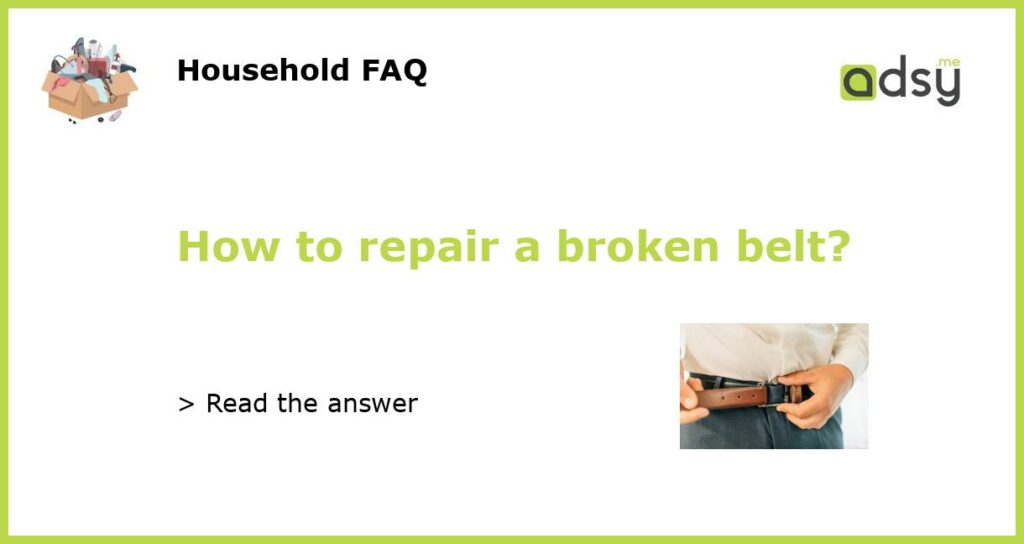Understanding the Problem: Identifying a Broken Belt
Before you can repair a broken belt, you need to understand what you’re dealing with. Belts are an essential component of many machines, handling tasks that range from powering engines to moving materials along conveyor belts. As such, they’re subject to a great deal of wear and tear, and over time can crack, fray or detach entirely.
If you’re lucky, you’ll notice a problem before the belt completely gives out. Look for signs of excessive wear, such as cracking or fraying around the edges. Belt alignment problems and strange noises may also signal an issue that requires attention. Whatever the case may be, it’s important to address belt problems as quickly as possible to avoid costly downtime.
Types of Belts: Assessing the Damage
The type of belt you’re dealing with will influence what kind of repair you need to make. Broadly speaking, there are four types of belts: flat belts, round belts, V-belts and timing belts. Flat belts are typically used in applications that require high-speed operation or low torque. Round belts offer excellent flexibility and minimal slippage. V-belts are used to transfer power from one point to another, while timing belts are critical components in engines and other precision applications.
Once you’ve identified what kind of belt you’re dealing with, you’ll need to assess the damage. For example, if you’re dealing with a frayed flat belt, you may be able to perform a “quick fix” by trimming away the frayed edges or tightening the tension. In other cases, you may need to replace the belt entirely.
Repair Options: Fixing the Problem
There are a variety of different methods you can use to repair a broken belt, depending on the severity of the damage and the type of belt you’re working with. Some of the most common solutions include:
- Replacing the belt entirely
- Trimming away frayed edges or sections of the belt
- Using a belt repair kit, which typically involves applying a bonding agent to the damaged area
- Re-tensioning the belt to ensure proper alignment and performance
In some cases, you may need to call in a professional to perform repairs. For example, if you’re dealing with complex engines or heavy machinery, the best course of action may be to bring in a technician who specializes in belt repairs.
Preventing Future Problems: Maintenance and Care
Ultimately, the key to repairing a broken belt is avoiding the problem in the first place. …
However, by adhering to a few simple best practices, you can maximize the lifespan of your belts and avoid costly repairs down the line. Here are a few tips:
- Perform regular inspections, looking for signs of wear and tear
- Maintain proper tension, aligning the belt as necessary
- Keep the belt properly lubricated to minimize friction and wear
- Store belts in a cool, dry location away from direct sunlight and other hazards that can cause damage
The Bottom Line: Taking Action to Repair Broken Belts
Whether you’re dealing with a frayed flat belt or a detached timing belt, it’s important to take action as soon as you notice a problem. Left unaddressed, belt issues can lead to costly downtime, decreased productivity and even safety hazards in some cases. By understanding the problem, assessing the damage and selecting the right repair solution, you can keep your machines running smoothly and avoid costly belt-related problems over time.






